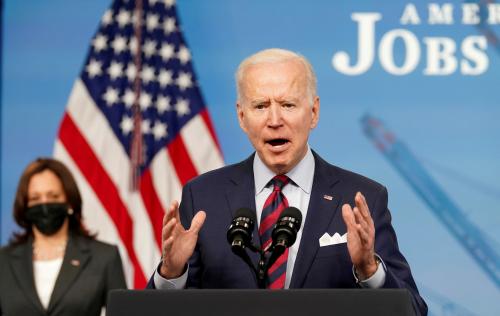Below is a viewpoint from the USMCA Forward 2022 report, which examines key priorities to build a more competitive, inclusive, and sustainable North American economy.
 The North American Free Trade Agreement (NAFTA) that was negotiated during President George H.W. Bush’s administration, approved by Congress during President Clinton’s administration, and took effect in 1994 achieved broader market openings than any prior trade agreements. It eliminated tariffs on all industrial products and most agricultural goods. It was the first trade agreement to open a broad range of services, remove substantial barriers to investment, and protect copyrights, patents, and trade secrets. It was also the first comprehensive trade agreement to join a developing economy with highly developed economies, creating a huge market—accounting for roughly $22 trillion and 493 million consumers today.
The North American Free Trade Agreement (NAFTA) that was negotiated during President George H.W. Bush’s administration, approved by Congress during President Clinton’s administration, and took effect in 1994 achieved broader market openings than any prior trade agreements. It eliminated tariffs on all industrial products and most agricultural goods. It was the first trade agreement to open a broad range of services, remove substantial barriers to investment, and protect copyrights, patents, and trade secrets. It was also the first comprehensive trade agreement to join a developing economy with highly developed economies, creating a huge market—accounting for roughly $22 trillion and 493 million consumers today.
Canada and Mexico are currently America’s two largest export markets. Our inter-regional trade is up six-fold since the agreement took effect. One-third of our total global trade is with our two NAFTA partners. Today 80 percent of world trade is conducted through global supply chains, and the NAFTA created one of the most vibrant chains. Roughly 14 million jobs depend on our trade and investment with our two neighbors.
The vibrancy of our economic bonds created by NAFTA strengthened our overall relationships with our neighbors leading to enhanced cooperation on a range of security issues, the sharing of intelligence, and improved border procedures. The three leaders began to hold yearly summits to discuss areas of potential cooperation. They created the North American Competitive Council comprised of senior representatives from the private sector of each country to provide recommendations on actions the trio could take to strengthen regional competitiveness. In addition, state and local officials began to reach across borders to meet with their counterparts to address issues that would benefits their cities and states.
In recent years, these interactions have sharply declined. This past November, President Biden hosted the North American Leaders’ Summit (sometimes called the “Three Amigos Summit”) for the first time in five years. The North American Competitive Council has not met in more than a decade. To deal with today’s challenges, whether it be climate, pandemics, migration, employment, border efficiency, or security, it is critical that we work with our neighbors and strengthen our trilateral relationships. Indeed, we need to take a page from the early post-NAFTA period to strengthen our economic and political relationships not only regionally but also globally.
That will require domestic political support. It is ironic, that as the economic benefits generated by the NAFTA have developed, public support for open trade has waned and concerns regarding globalization have grown. Many are skeptical about whether trade puts their job at risk. Few Americans know the benefits that we have derived from the NAFTA and could secure with future trade agreements. Again, the collaboration established in the early post-NAFTA period with our businesses, universities, mayors, and governors, could help correct the knowledge gap and importantly assist with programs to train our workers to secure and excel in 21st century jobs. Many proposals have been made, but the collaboration needed to make them work has been lacking.







Commentary
Lessons learned from the NAFTA
February 28, 2022